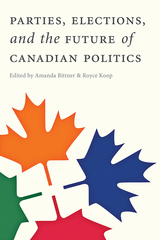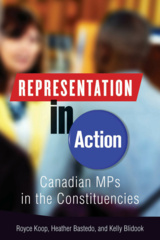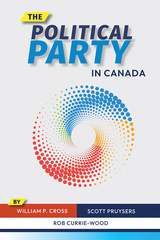
Fighting for Votes
Parties, the Media, and Voters in an Ontario Election
Elections are not just about who casts ballots – they reflect the citizens, parties, media, and history of an electorate. Fighting for Votes examines how these factors interacted during a recent Ontario election.
The authors begin by examining the province’s political culture and history. They then delve deeply into the campaign by exploring three lines of enquiry that help define representative democracy: How do parties position themselves to appeal to voters? How is information from and about parties transmitted to voters? And how do voters respond to the information around them?
Marshalling a unique collection of evidence drawn from many different sources – political party websites, candidate surveys, advertisements, debate transcripts, leader tours, newspapers, websites, Twitter feeds, and a survey of the electorate – the authors provide a sophisticated analysis of the interplay between voters and political parties in an era of new media. The most complete account of a provincial election available, Fighting for Votes illuminates the evolving electoral landscape.
Students and scholars of political parties, election campaigns, Ontario politics, and political communications will appreciate this well-researched book.
Fighting for Votes is the first wide-ranging examination of a provincial election in Canada. Combining a traditional study of voter behaviour during the 2011 Ontario election with an analysis of the three major political parties’ campaigns, it incorporates material on new social media and the leaders’ debate, as well as offering an interesting and informative look at how voting intentions and campaign tactics shift during an election.
Fighting for Votes is an impressively detailed analysis of the 2011 Ontario provincial election. It addresses party policy, campaign ups and downs, the leaders’ debate, the polling-fed horserace, campaign messaging, party strategies and their modification, and illuminates why and how voters choose to cast votes. This book will quickly become the standard for studying provincial elections.
In an environment where election campaigns and information flows are becoming increasingly controlled, this engagingly written and insightful analysis of a provincial election shows us just how political parties position themselves to appeal to voters and how, in turn, voters respond to the information around them.
William P. Cross is a professor and Bell Chair in Canadian Parliamentary Democracy in the Department of Political Science at Carleton University. His research focuses on comparative party organization and intra-party democracy. His recent publications include The Challenges of Intra-Party Democracy (with Richard S. Katz, 2013).
Jonathan Malloy is an associate professor and chair of the Department of Political Science at Carleton University. His research and teaching interests are on Canadian political institutions. He is a former Ontario legislative intern and policy analyst for the Ontario government.
Tamara A. Small is an associate professor in the Department of Political Science at the University of Guelph. She is co-editor of Political Communication in Canada: Meet the Press, Tweet the Rest (UBC Press, 2014).
Laura B. Stephenson is an associate professor in the Department of Political Science at the University of Western Ontario. Her research focuses on political behaviour and the effects of institutions. Her work has been published in several journals including Electoral Studies, Political Psychology, the International Journal of Public Opinion Research, and the Canadian Journal of Political Science. She is co-editor of Voting Behaviour in Canada (UBC Press, 2010).
1 Introduction
2 The Political and Economic Setting
3 The Run-Up to 2011
4 The Campaign
5 The Parties’ Campaign Messages
6 From 1.0 to 2.0: The Online Campaign
7 The Leaders’ Debate
8 The Parties’ Campaign Strategies
9 At the Races: The Toronto Star’s Coverage of the Election
10 Did the Parties’ Campaign Efforts Affect Voters?
11 Vote Choice
12 Fighting for Votes
Appendix
Notes
References
Index












